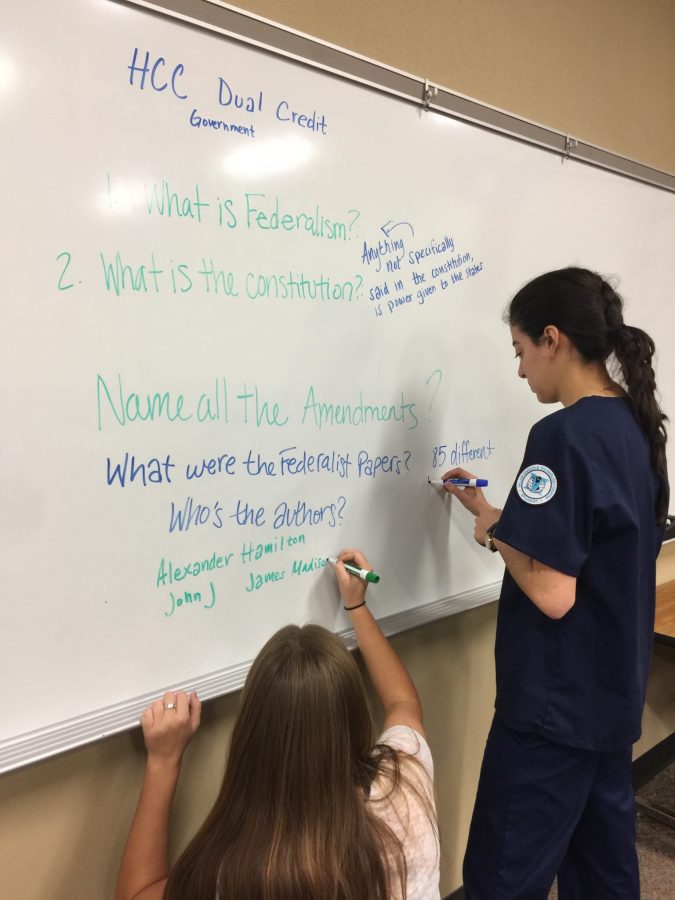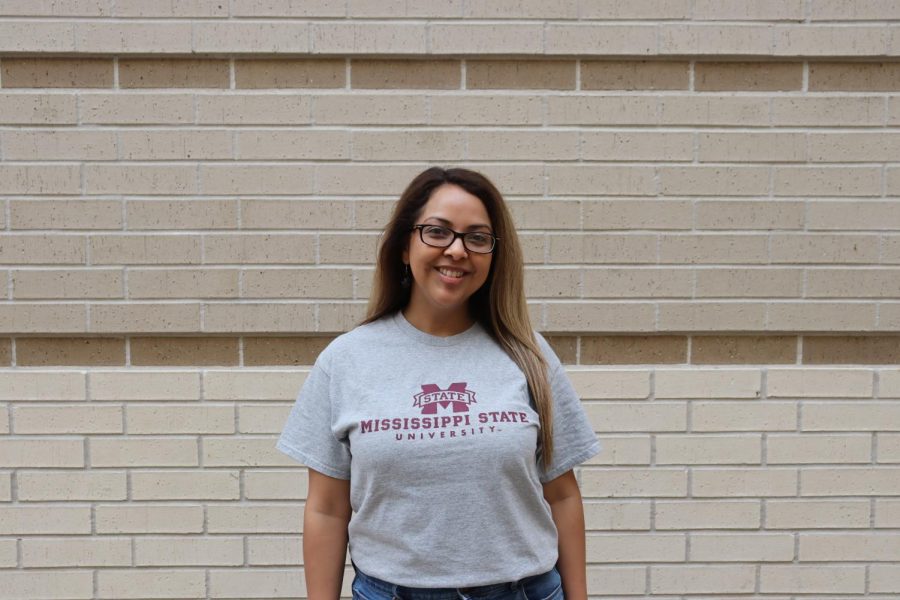Fifteen students sit at their desks, focused on the smartboard. They hang on to every word said by their teacher as she lectures them about the subject. After the lecture, students watch as a documentary is played to reinforce the information just learned. At the end of the day, when the students go home, they are expected to review the topics discussed in class, which will allow them to be a part of class discussions the next day.
When course selections begin, students realize the important choices they have to make about the classes they want to take. In their junior and senior year, students have the option of choosing between academic, AP or dual credit classes. The dual credit classes offered at Tompkins are U.S. History (11th grade), English IV (12th grade), Economics (12th grade) and U.S. Government (12th grade); these offer a way for students to enroll in college level courses while they are still in high school.
Betsy Dennison is an academic U.S. History teacher as well as a dual credit U.S. History teacher. Her academic classes do more interactive activities, while her 3rd and 4th period dual credit classes are more discussion based. In her dual credit classes, there are power points and lectures, but there is also a lot of discussing as the class moves through different topics in U.S. History.
“I enjoy discussing history on a deeper level with my dual credit students. This class teaches them the skills they need in order to be prepared for college in a smaller setting,” said Dennison.
Before course selection, dual credit meetings begin so that parents and students have the opportunity to learn about the courses. In addition to signing up to take the class, parents and students must also fill out paperwork for Houston Community College (HCC). Students have to either take the TSI test, which ensures that the student is ready to take college level classes, or submit scores from previous standardized tests such as the STAAR test or the SAT/ACT to be able to get into the dual credit class of their choice.
“I teach it exactly like a college class. There is a lot more student responsibility for their own learning, more reading involved, and fewer assignments which means they are weighted more,” said Dennison.
The benefits of taking dual credit classes are that students can get both college credit as well as High School credit and also start a college transcript that will follow them into the university they decide to attend after graduating. There is more one on one assistance from the instructor, but there is also more independent learning involved. One of the disadvantages is that not all colleges accept the HCC credits; however, all public schools in Texas accept it.
“I’m here to go over the material with the students, discuss it with them, make sure they understand it, and to help them be successful on the three exams that they have every semester,” said Dennison.
The difficulty of tests and assignments increase as students enter this college credit class. Along with taking notes, students spend class time watching documentaries with their teacher lecturing afterwards to ensure comprehension. Junior Mikaela Wittmer is enrolled in dual credit U.S. history and has Dennison as her teacher. She took this class as a way for her to get high school and college credit without being enrolled in AP classes.
“The amount of writing that is involved in this class is excessive with my recent test being three fourths writing. However, I’m glad I took this course because it exposes me to different concepts of history and relates it back to my real life,” said Wittmer.









